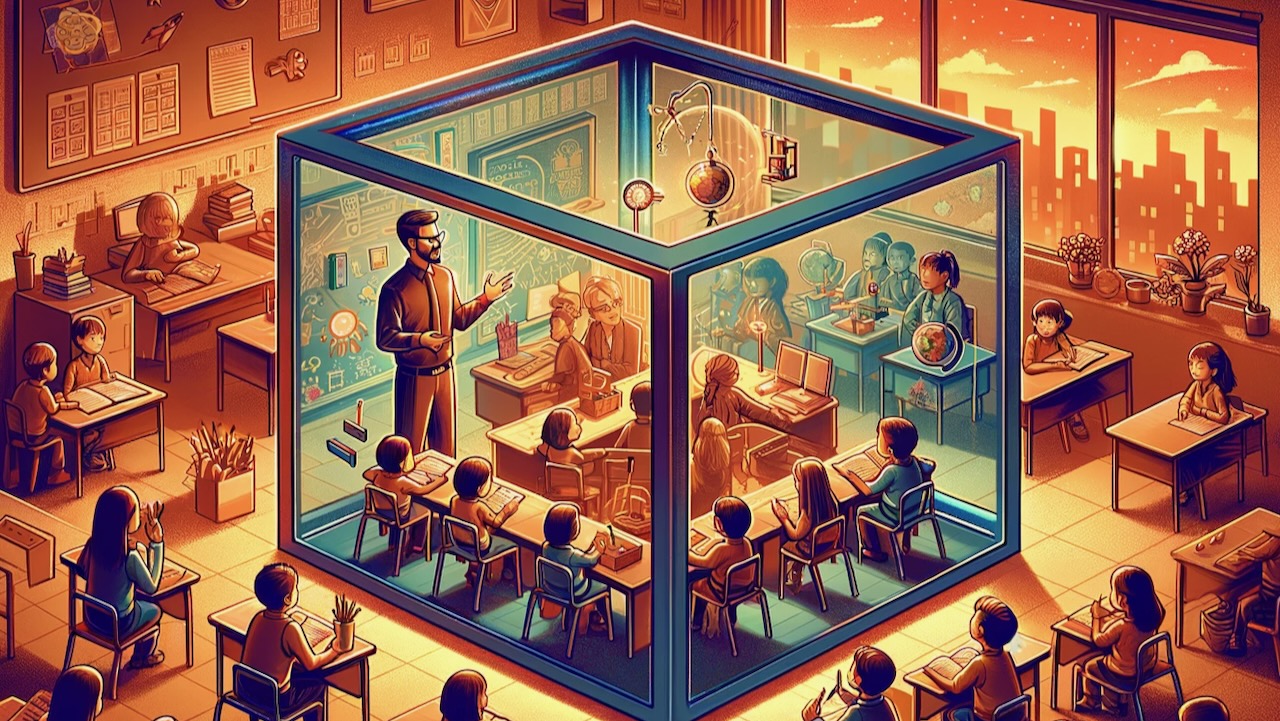Professional development: Where did the Marshmallow Challenge go?

My most favored discussion around the Marshmallow Challenge centers on working with constraints and teaching teachers to think inside the box (the classroom).
Matthew Worwood Tweet
For over a decade, I’ve taught various classes on design and creativity to students pursuing careers in digital media and to teachers tasked with designing new solutions for their classrooms.
In most of these courses, I begin with the Marshmallow Challenge. Few had heard of this activity when I started using it with teachers in the Academy of Digital Arts and Sciences.
You may already know about this challenge if you’re reading this article. Still, shockingly, after a decade of using it, I’ve experienced a trend in fewer and fewer people reporting knowing about it, including educators. I’m surprised, as it was gaining rapid popularity in the 2010s.
I am also worried that its decrease in use is because the school days make it harder and harder to integrate a fun and beneficial activity that takes less than 30 minutes to execute.
Given that it is less known than I have assumed in the past, I will take this moment to explain the Marshmallow Challenge: Participants have 18 minutes to build the tallest freestanding structure using 20 pieces of spaghetti, one yard of tape, one yard of string, and a marshmallow on top. There’s even a famous TED Talk on the activity.
See Also:
Introducing AI Scenario Playquests
Making Connections
In 2013, I joined a new department team at the University of Connecticut and began teaching the first foundation classes for new students enrolled in the Digital Media and Design major. My colleagues had yet to hear of the Marshmallow Challenge. It was an opportunity to follow the trend and use it to introduce some basic design principles to students (e.g., iterative design). It is also a fantastic ice-breaker for any new class and a great way to start the semester.
However, my use of the Marshmallow Challenge has expanded over the past few years as I’ve focused more and more on targeting the activity based on the different contexts where I’ve used it. For new students to Digital Media Design, I introduce the concept of an ill-defined and defined problem. Although the task is unknown to most, the Marshmallow Challenge is technically a highly defined problem; it has a clear goal, you know the conditions of the challenge upfront, and you have easy access to all the materials.
Some design problems are defined, others less defined. Most students typically experience semi-defined problems in the classroom, even if presented as ill-defined by the teacher. I want them to know upfront about the difference.
Addressing Failure
In over ten years of assigning the Marshmallow challenge, I have never experienced a situation where every group succeeds; from my experience, approximately one in four groups produce a standing structure at the end of the 18 minutes. Therefore, I use this situation to pick on a single group and ask them, “Why did they fail.” And I emphasize the word failure. At this point, there is a shocked expression on the participants’ faces, accompanied by a few gasps. I can use this experience to discuss failure and, more specifically, the discomfort when they hear the word directed at them in response to a situation where they have fallen short of meeting an intended goal.
Students are comforted when I inform them that few succeed with this assignment because it is new; there is a need to obtain more skills and knowledge before we can build a successful tower. The chances of failure are high whenever we take on something new, particularly if we lack experience and expertise. Still, with more experience, we will go on to build taller and taller structures over time.
Working With Constraints
Perhaps my most favored discussion around the Marshmallow Challenge when working with educators is highlighting the constraints of the problem and the concept of thinking inside the box. As teachers, we are working to address various instructional issues regularly, and when designing solutions to these problems, we are working despite constraints.
The connections to time constraints are obvious; participants of the Marshmallow Challenge only have 18 minutes to complete the assignment, and teachers only have the time available to them in a working day, week, or month. Likewise, we must address the problem with the available resources, but how we perceive and use the resources can vary based again on our experience and creative thinking. I often liken this to how we perceive interactive whiteboards and Google Docs. Their use varies significantly from teacher to teacher and from classroom to classroom.
So, this is my call to bring back the Marshmallow Challenge to every K-12 classroom environment. I encourage everyone to use the experience to discuss how we engage and interact in any creative problem-solving process and avoid the trap of simply seeing it as an activity that teaches the concept of iterative design.

Teachers are designers. We even have a related field of study called instructional design. Design is about solving problems and solving problems within the constraints of a box. That’s why teachers must think inside the box.

Why it might be time to re-evaluate our approach to teaching Divergent Thinking in the Classroom? All the times we say "come up with ideas" but in reality the time constraints or lack of knowledge

AI Literacy can help students know when they are most likely to experience errors, bias, and the potential for misinformation, which might help emphasize the value of human judgment. And understanding how generative AI uses prompts to make predictions can assist future creatives in ideation.

As a mindset, design thinking remains highly relevant across various fields and contexts; design thinking is a collection of principles promoting data use to validate ideas and inform how we solve real-world problems.
Matthew Worwood
I am a professor of Digital Media Design with a research focus on Design Thinking, Teacher Creativity, and technology-assisted creativity. I co-host the Fueling Creativity in Education podcast, blog at DadsforCreativity.com, and I have almost two decades of experience developing new innovative programs across the grades.